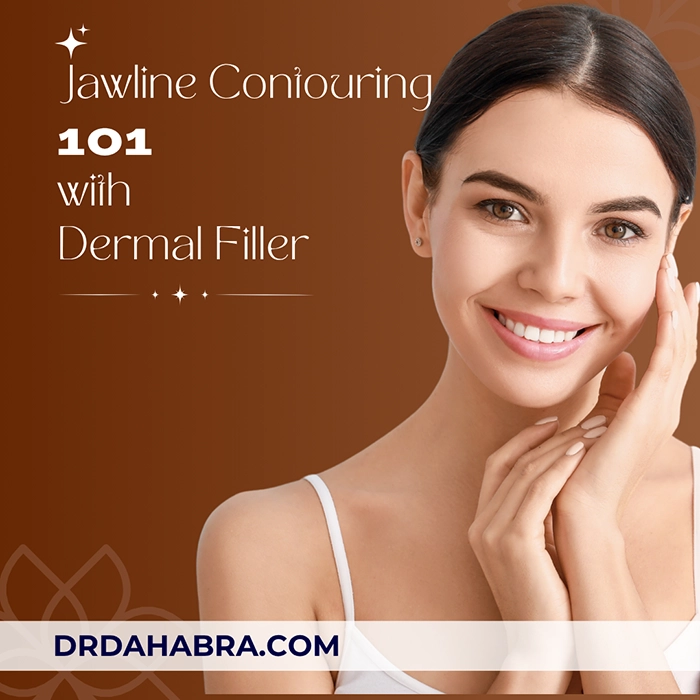Powerful Guide to Nonsurgical Jawline Contouring with Dermal Fillers
Introduction to Jawline Contouring
Jawline contouring is a cosmetic technique that enhances the definition and shape of the Jawline. This article is about Jawline Contouring 101 with dermal fillers.
It blends surgical and nonsurgical methods to achieve a more sculpted, prominent jawline. Whether you want Jawline contouring with dermal fillers, Jawline contouring with Botox, or even surgical options like V‑line jaw surgery, this introduction sets the stage.
The rise of selfies, TikTok filters, and influencer culture has glamorized chiseled jaws. Searches like “how to get a snatched jawline” and “define my jawline” are skyrocketing.
We’ll explore why a defined jaw matters—confidence, profile photos, and age‑defying structure.
In Florida and beyond, options like Jawline contouring near me are booming. This guide covers everything—from Jawline contouring cost and jawline filler before and after photos to realistic recovery expectations, risks, and side differences between men and women.
You’ll get the whole picture before your first appointment.
Table of Contents
1. Dermal Fillers for Jawline Enhancement
2. How Masseter Botox Creates a Slimmer Jawline
3. Jawline Contouring with Sculptra
4. Jawline Contouring with Makeup
5. Surgical Options: Jaw Contouring Surgery & Implants
6. Jawline Exercises: Mewing, Tongue Stretches & Flexes
7. Consulting with a Professional for Jawline Contouring
8. Jawline Contouring for Men vs. Women: Key Differences
9. PDO Threads Role in Lifting & Defining the Jaw
10. Radiofrequency using Venus Legacy
11. The Jawline Contouring Journey: What to Expect
12. Recovery and Aftercare for Nonsurgical Jawline Contouring
13. Risks, Side Effects & Contraindications of Jawline Contouring
14. Frequently Asked Questions (FAQs)
15. Conclusion
16. References
1. Dermal Fillers for Jawline Enhancement
Dermal fillers, often hyaluronic acid-based, are the go‑to nonsurgical jawline contour filler.
Injected along the mandibular border, they add volume, sculpt sharp angles, and create jawline definition. Results are immediate and visible—look at jawline filler before and after galleries.
The amount needed varies: women often use 1–2 syringes; men may need 2–4 for a stronger, more masculine jawline. A top‑tier clinic in Miami or Tampa typically charges $600–$900 per syringe—so Jawline contouring cost depends heavily on the units used.
Side effects are minor: temporary swelling, bruising, and occasional lumps. Choosing the best jawline filler brand—like Juvederm or Restylane—helps minimize risks like filler migration.
Touch‑ups are needed every 12–18 months to maintain your sharp new profile.
2. How Masseter Botox Creates a Slimmer Jawline
Masseter Botox targets the masseter muscle, which, when overactive, contributes to a wide, square jaw appearance.
By softening this muscle, your Jawline looks slimmer and more sculpted—perfect for achieving that sought‑after V‑shape. It’s a clever approach to Jawline contouring for men and women alike.
Depending on muscle size, 20–40 units per side are injected. Results emerge in 2–4 weeks and can last up to 6 months. Expect to pay around $12–20 per unit, so overall, it’s a mid‑range add‑on to your contouring journey.
Beyond aesthetics, masseter Botox treats teeth grinding (bruxism) and TMJ pain. Many patients report reduced jaw tension and fewer headaches, offering cosmetic and functional benefits in one treatment.
3. Jawline Contouring with Sculptra
Sculptra is a stimulator that promotes collagen growth—unlike fillers that add volume directly.
You encourage gradual shaping as collagen builds up by injecting it along the Jawline. Results typically appear over several months, lasting up to 2 years.
It works subtly and naturally—no sudden shift, just a refined jaw that improves over time. It is ideal for folks who say, “I want a natural jawline contouring journey.”
One treatment costs roughly $800–1,200, but you might need 2–3 sessions for full effect.
Sculptra offers longer-lasting results as a collagen stimulator, but initial downtime can include mild swelling or firmness. You’ll need to massage the area post‑injection to avoid nodules.
It’s a great choice if you prefer gradual and long-term changes.
4. Jawline Contouring with Makeup
Makeup contouring is a fast, non‑lasting trick that sculpts a sharp jawline using light and shadow. A matte bronzer applied just under the jaw creates depth, while a highlighter below the chin enhances shape.
It’s a popular method for influencers doing Jawline contouring with makeup—great for selfies, events, or mask‑off days. Anyone can do this at home with basic tools, and it’s the most affordable option in our guide.
While quick and budget-friendly, it doesn’t build structure—it only simulates it. Yet it’s a valuable step in your journey, especially when paired with longer-term methods like fillers or jawline slimming exercises.
5. Surgical Options: Jaw Contouring Surgery & Implants
Surgical jaw contouring—like mandibular implants or bone shaving—is permanent and dramatic. It’s the most invasive option, requiring anesthesia, incisions, and a recovery period of 1–2 weeks.
Costs vary widely: simple contouring may cost around $8,000, while implants and complete bone restructuring can cost $15,000+. It’s a significant investment but gives precise control over shape and symmetry.
Expect swelling, tightness, and some nerve numbness post-surgery. It’s essential to consult an experienced maxillofacial surgeon. Keep in mind that this jawline surgery is major and irreversible—so choose carefully.
6. Jawline Exercises: Mewing, Tongue Stretches & Flexes
Jawline exercises or “jawline contouring with exercises” include mewing (pressing your tongue to the roof of your mouth), chin tucks, and jaw flexes. These aim to strengthen muscles and reduce sagging.
Though there’s no robust clinical proof, many swear by it. You can do these exercises anywhere, anytime—no cost involved.
Over weeks or months, you may notice subtle changes in muscle tone and posture.
If you’re wondering about “jawline exercise results,” be patient. These methods won’t sculpt bone but support the facial tone, complementing injectables or skincare efforts.
7. Consulting with a Professional for Jawline Contouring
A qualified provider—board‑certified dermatologist, plastic surgeon, or experienced injector—is key to safe, attractive results. A thorough consultation starts with reviewing medical history, anatomy, and your jawline goals.
Expect them to show you Jawline contouring before and after photos and discuss products like dermal fillers, Botox, Sculptra, Kybella, and devices like CoolSculpting or PDO threads. They’ll also provide pricing breakdowns for jawline contouring costs tailored to you.
They’ll assess contraindications—pregnancy, autoimmune issues, bleeding disorders—and determine your recovery expectations.
Ask: “What’s the downtime?”
“Can I combine treatments?” and
“What are maintenance plans?”
8. Jawline Contouring for Men vs. Women: Key Differences
Men often prefer a firm, angled jaw with a squared chin tip—so providers add more filler or recommend implants. Women may undergo softer, more refined V-line jaw surgery or delicate Botox.
Men use more filler (2–4 syringes), while women may be happy with 1–2. Muscle‑targeting like Masseter Botox is used similarly, but dosage varies depending on bulk.
Recovery varies slightly: men may heal faster due to denser muscle and skin. Makeup contouring options also differ—men often go lighter or skip it entirely—though both genders can benefit from highlighting and shading based on bone structure.
9. PDO Threads Role in Lifting & Defining the Jaw
PDO (polydioxanone) threads are absorbable sutures that lift sagging skin and reinforce the Jawline. Inserted under the skin, they create a scaffold that tightens and gradually dissolves over 6–9 months.
They’re an excellent tool for enhancing nonsurgical contouring—especially if you’re considering PDO thread lifts for the Jawline as an alternative to repeated fill-ups. Results last about 12–18 months, and cost ranges from $1,200 to $3,000 per session.
Side effects include temporary bruising and foreign‑body sensation. You’ll look immediately lifted, but the full collagen and tightening effect takes a few weeks. It’s worth considering if your skin needs support, not just volume.
10. Radiofrequency using Venus Legacy & Ultrasound Treatments for Skin Tightening
Using the Venus Legacy machine, a RF machine, tighten skin by heating collagen fibers under the Jawline. These can be used alone or after fillers to enhance definition.
Sessions are non‑invasive, usually 30 minutes, with mild soreness but no downtime. Costs vary: RF costs around $800–1,200 for the package of 6 sessions.
They’re ideal for mild sagging when you’re not ready for surgery. Results appear gradually over 2–6 months, lasting up to 2 years, and beautifully complement jawline fillers or Botox.
11. The Jawline Contouring Journey: What to Expect
Your first step is the consult: share photos and discuss concerns about weak chin, double chin, or asymmetry. A provider will recommend injectables, devices, or surgery based on your anatomy.
If doing nonsurgical treatments, expect an appointment time of 30–90 minutes. Fillers and Botox are quick; Sculptra, threads, or CoolSculpting take longer. Recovery is minimal—heals in days.
You’ll see partial results immediately, with full effects in weeks.
Maintenance matters. Fillers need touch‑ups every 12–18 months; Botox is 4–6 months; threads and devices last longer.
Budget accordingly, especially if you combine multiple treatments for long-term success.
12. Recovery and Aftercare for Nonsurgical Jawline Contouring
After filler: expect swelling and bruising for 1–2 days—apply ice, avoid vigorous activity, and sleep elevated. Massage instructions may be included to help contour.
There’s virtually no downtime for Botox or masseter injections—brace yourself for temporary weakness chewing; avoid rubbing the area for 24 hours. Combining treatments may require layered aftercare instructions.
Sculptra might bring firmness or bumps at the injection site. Wear a compression strap if advised, and massage daily.
CoolSculpting leaves numbness temporarily—no downtime required, but follow-up depends on how your body reabsorbs treated areas.
13. Potential Risks, Side Effects & Considerations
Common side effects include bruising, swelling, tenderness, and mild redness—usually mild and temporary. In rare cases, lumps or asymmetry from jawline filler risks may occur—but skilled injectors can dissolve filler if needed.
More serious issues can stem from vascular occlusion when a filler blocks a blood vessel. That’s why choosing to define my jawline specialists with emergency tools like hyaluronidase is crucial.
Women and men with autoimmune conditions or pregnant patients may have a higher risk.
Long‑term, repeated treatments may stretch the skin or numb nerve endings. Depending on individual response, changes in anatomy may influence future injections.
Be ready for scheduled maintenance and intermittent reassessments. Avoid if you have infections, keloid tendencies, or severe facial asymmetry.
14. Frequently Asked Questions (FAQs) about Jawline Contouring 101 with Dermal Fillers
Q1. How do you contour your Jawline?
Concise Answer: You can contour your Jawline using makeup, exercises, or cosmetic treatments like fillers, Botox, and CoolSculpting.
Detailed Answer: Jawline contouring can be achieved in several ways, depending on your goals and budget. For temporary effects, makeup using bronzer and highlighter can create shadows that give the illusion of a sharper jaw.
For more permanent or noticeable results, cosmetic options include dermal fillers to add volume and shape, Botox to slim the masseter muscles, CoolSculpting or Kybella to reduce fat, and even PDO threads to lift sagging skin. Each option can be used alone or combined for a more sculpted look.
Q2. Does Jawline contouring work?
Concise Answer: Yes, jawline contouring can effectively enhance the shape and definition of your Jawline.
Detailed Answer: When performed by a skilled professional, Jawline contouring delivers noticeable improvements. Fillers can reshape and define the mandibular line, Botox can slim the face, and fat-dissolving treatments like Kybella can eliminate double chins.
Results vary based on individual anatomy, the method chosen, and how much correction is needed. Nonsurgical options provide temporary results, while surgery offers more permanent outcomes.
Q3. How much does Jawline contouring cost?
Concise Answer: Depending on the method and location, Jawline contouring can range from $600 to over $10,000.
Detailed Answer: The cost of jawline contouring depends heavily on the procedure type. Dermal fillers average \$600–\$1,200 per syringe; most people need 1–4 syringes. Masseter Botox typically costs $250–$600 per session.
CoolSculpting for the Jawline ranges from $700–$1,200 per treatment area. Sculptra and PDO threads fall in the $1,200–$3,000 range. If you opt for surgery, expect to pay $8,000–$15,000 or more.
Prices also vary depending on the provider’s expertise and geographic location.
Q4. What is the jaw contouring procedure?
Concise Answer: It involves sculpting the Jawline using injectable fillers, Botox, or surgical techniques to enhance shape and definition.
Detailed Answer: Jaw contouring can be nonsurgical or surgical. Nonsurgical options include dermal fillers to enhance volume and structure, Botox to slim the Jawline by relaxing the masseter muscles, CoolSculpting or Kybella to reduce fat, and PDO threads for lifting.
These procedures are usually done in the office with minimal downtime. Surgical options like V-line jaw surgery or implants are more invasive and offer permanent changes but require more extended recovery periods and anesthesia.
Q5. What is Jawline Contouring, and Why is it So Popular?
Concise Answer: It’s a cosmetic method to enhance jaw definition, gaining popularity due to social media and beauty trends.
Detailed Answer: Jawline contouring has surged in popularity as more people seek sharper, more defined facial features. The rise of selfie culture, Instagram filters, and beauty influencers has made the “snatched” Jawline a sought-after trait.
Jawline contouring includes non-invasive and surgical methods to sculpt the jaw and chin area, improving facial harmony. It appeals to men and women looking for subtle yet impactful aesthetic enhancements without drastic changes.
Q6. Is Jawline contouring painful?
Concise Answer: Most patients report mild discomfort, but the procedures are generally well-tolerated.
Detailed Answer: Nonsurgical treatments like fillers and Botox typically involve a few pinches, with topical numbing cream applied beforehand. Some swelling or tenderness might follow, but this usually subsides within a few days.
Sculptra and PDO threads may cause more pressure or tightness temporarily. Surgical options involve general anesthesia and a longer recovery time, during which pain management is more critical.
Overall, most people find the discomfort manageable and temporary.
Q7. How long do the results of Jawline contouring last?
Concise Answer: Results can last from 4 months to over 2 years, depending on the treatment used.
Detailed Answer: Botox results typically last 4–6 months. Hyaluronic acid fillers may last 9–18 months, while Sculptra can provide results for up to 2 years or more by stimulating collagen production. PDO threads dissolve over 6–9 months but offer lift to 12–18 months.
Surgical results are permanent but may change slightly with aging. Maintenance sessions help extend and preserve results, especially for nonsurgical options.
Q8. Can I combine different jawline contouring treatments?
Concise Answer: Combining treatments often yields better and more balanced results.
Detailed Answer: Many providers recommend layering techniques for optimal jawline enhancement. For example, Botox can slim the masseter while fillers define the Jawline’s angles.
Sculptra builds volume over time, and CoolSculpting or Kybella can reduce fat under the chin. PDO threads can then lift loose skin.
The key is to customize the plan based on your anatomy and goals, ensuring each treatment complements the others for natural-looking results.
Q9. How much filler do men need for a chiseled jawline?
Concise Answer: Men often require 2 to 4 syringes of filler for a strong, angular jawline.
Detailed Answer: The amount of filler depends on facial structure, skin thickness, and desired outcome. Men typically seek a square, masculine look, which requires more volume along the jaw and chin.
Providers might use 2–4 syringes of a dense filler like Juvederm Volux or Restylane Lyft. Costs will reflect the number of syringes used, and touch-ups may be needed every 12–18 months to maintain definition.
Q10. I hate my weak chin—what nonsurgical options work?
Concise Answer: Fillers, Botox, Venus Legacy, and Kybella can improve jaw and chin definition without surgery.
Detailed Answer: A weak chin can be corrected using dermal fillers to add projection and structure. Botox may reduce muscle bulk, especially if paired with a large masseter.
Venus Legacy and Kybella help by removing fat that hides jaw definition. These options are ideal for people who want to avoid surgery but achieve a stronger, more balanced facial profile.
Multiple treatments may be combined for optimal results.
Q11. Has anyone regretted getting jawline filler?
Concise Answer: Some people do, often due to overfilling, asymmetry, or choosing an inexperienced provider.
Detailed Answer: While many patients are happy with their results, regrets happen when expectations don’t match outcomes. Overfilling can make the face look unnatural, while poor technique can lead to lumps or unevenness.
Choosing a qualified, experienced injector is critical. The good news?
If needed, hyaluronic acid fillers can be dissolved with hyaluronidase, offering a reversible solution. Always consult reviews, ask questions, and review before/after photos before committing.
Q12. Do jawline exercises and mewing work?
Concise Answer: They can mildly tone muscles but won’t significantly change bone structure.
Detailed Answer: Jawline exercises like mewing, chin lifts, and chewing gum strengthen the lower face and neck muscles. While these won’t reshape your jawbone, they may slightly enhance definition by tightening soft tissue.
Results vary and are subtle compared to cosmetic treatments. They work best when paired with healthy habits like weight loss and skincare.
Still, they’re low-cost and risk-free options worth exploring.
Q13. What’s the recovery like for Kybella?
Concise Answer: Swelling, bruising, and numbness for 1–2 weeks are common after Kybella.
Detailed Answer: Kybella works by breaking down fat cells under the chin. After injections, the area swells noticeably for several days to a week.
Bruising, tenderness, and temporary numbness are also typical. Complete recovery may take up to 14 days. Most patients need 2–4 sessions spaced 4–6 weeks apart.
It’s best to plan treatments when you can take some downtime. Ice packs, Arnica, and compression wraps can help reduce swelling faster.
Q14. How do I find a reputable injector?
Concise Answer: Look for licensed professionals with certifications, reviews, and proven results.
Detailed Answer: Finding the right injector is crucial for safety and aesthetics. Choose board-certified dermatologists, plastic surgeons, or experienced nurse injectors.
Research online reviews, browse their “jawline contouring before and after” galleries, and ask about their experience with products like Juvederm, Sculptra, or Botox. During your consultation, assess their communication and treatment plan.
Don’t just look for the cheapest provider—experience matters more than price.
Q15. Can masseter Botox help TMJ in addition to slimming?
Concise Answer: It can relieve TMJ pain while slimming the Jawline.
Detailed Answer: Masseter Botox isn’t just for cosmetic slimming—it’s also used to treat bruxism (teeth grinding) and TMJ dysfunction. Relaxing the jaw muscles reduces tension, clenching, and related headaches.
Many patients notice both a slimmer face and improved comfort after treatment. The dual effect makes it a popular choice for people with wide jaws due to muscle bulk and jaw pain.
It’s a practical and aesthetic solution in one.
15. Conclusion: Jawline Contouring 101 with Dermal Fillers
Your Jawline is more than just a facial feature—it reflects your confidence, self-image, and how the world sees you.
Whether you’re looking to sharpen your profile for aesthetic balance or to feel more empowered in your skin, jawline contouring offers a spectrum of options to fit your lifestyle, budget, and comfort level.
From subtle enhancements with dermal fillers to transformative changes through surgical intervention, the path to a snatched, defined Jawline has never been more accessible or customizable.
Nonsurgical methods—like Jawline contouring with Botox, Sculptra, Venus Legacy, or PDO threads—offer quick recovery and natural-looking results. They’re perfect for those who want to avoid downtime but still crave the impact of a more sculpted appearance.
And let’s not forget about the powerful simplicity of makeup techniques and exercises for those who prefer a more organic route. This guide has shown that finding the right combination that reflects your vision and enhances your beauty without compromise is not just about one treatment.
Imagine walking past the mirror and finally seeing the sharp Jawline you’ve always wanted. Picture the confidence in photos, events, or everyday moments.
You deserve to feel powerful in your skin—to look the way you feel inside. Jawline contouring is more than a trend—it celebrates self-expression, strength, and beauty.
Whether starting small or going all-in, your journey begins with just one step—and you’ve already taken it by being here.
We have covered everything about Jawline Contouring 101 with dermal fillers.
Jawline Contouring 101 with Dermal Fillers
Discover the Jawline Contouring 101 with Dermal Fillers with Dr. Dahabra. Why wait to unlock your beauty?
Call us now at (954) 595-2607 or book online. Your journey begins with just a click or a call.
Embrace the beauty, embrace innovation – Embrace You.
16. References
Beverly Hills Wellness Center & Med Spa, Florida
Using Injectable Fillers for Chin and Jawline Rejuvenation
PMC (NIH/NCBI)
A clinical study showed hyaluronic acid fillers improved chin/jaw volume by ≥1 grade in ~78% of patients over 18 months.
Facial Contouring by Using Dermal Fillers and Botulinum Toxin A
PMC (NIH/NCBI)
Summarizes combined use of HA fillers and Botox, including masseter muscle relaxation for jaw reshaping.
Cheek and Jawline Contouring: A Modern Approach to Facial Symmetry
Mosaic Institute (Miami Skin & Vein)
Explains modern non-invasive techniques combining Restylane Contour filler & masseter Botox for symmetry.
The Benefits of Jawline Contouring for Facial Aesthetics, Techniques & Results
Utah Facial Plastics
Highlights dermal fillers, threads, and RF treatments as effective nonsurgical jawline solutions.
Dysport in Masseter: Applications and Considerations for Jawline Contouring
DoctorMedica
Discusses Dysport (similar to Botox) for masseter slimming, dosage, technique, and outcomes.
Masseter Botox Is the Nonsurgical Secret to a Snatched Jaw Line
InStyle (media expert review)
Describes off-label Botox use in masseter muscles for slimming and TMJ relief.
The Innovative New Ways Surgeons Are Using Injectables to Sculpt the Human Face
Allure
To sculpt jawlines, it covers cutting-edge injectable techniques, including HA fillers, Botox, and Kybella.
Jawline Filler: What to Know About the Treatment on the Rise
Allure
Offers insights on hyaluronic and CaHA fillers for jawline enhancement, FDA‑approved options, risks, and downtime.
Everything to Know If You’re Considering Jawline Filler
Glamour
Outlines injection types (HA, Kybella), cost, results duration (~1 year), and precautions.
8 Things You Should Know Before Getting Injectables
Glamour
Lays out safety information, types of injectables (Botox, fillers, Kybella), and the importance of qualified providers.




